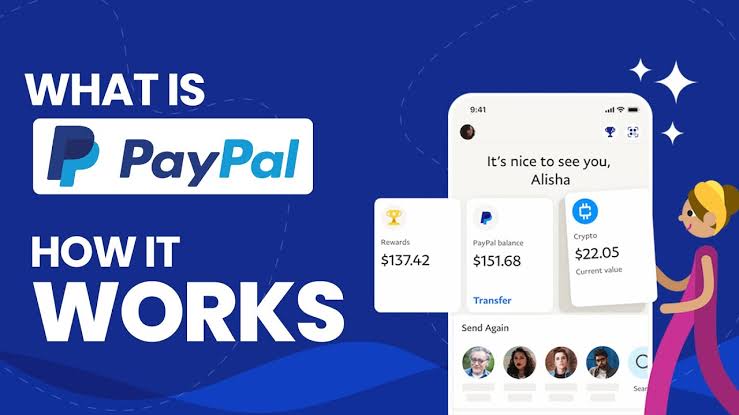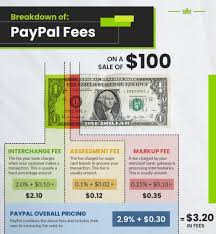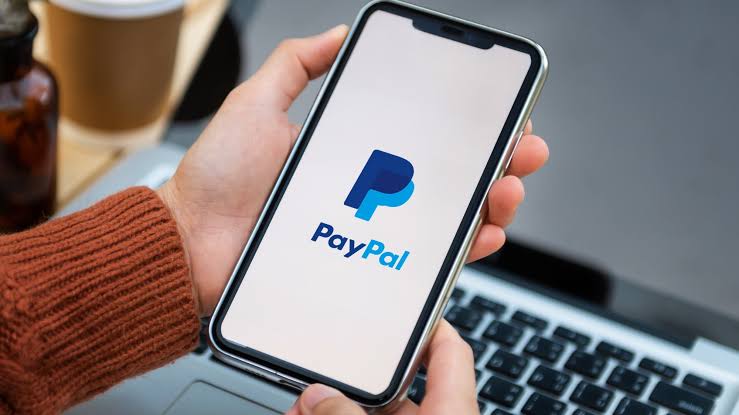In today’s digital age, online transactions have become commonplace, revolutionizing the way we buy and sell goods and services. Among the myriad of payment platforms available, PayPal stands out as one of the most widely used and trusted. PayPal, founded in 1998, has evolved into a global leader in online payment processing, boasting over 400 million active users worldwide.
It serves as a digital wallet that allows individuals and businesses to send and receive money securely over the internet. Users link their bank accounts, credit cards, or debit cards to their PayPal accounts, enabling seamless transactions without the need to disclose sensitive financial information to multiple parties.
Within the realm of PayPal, there exists a specific category known as “PayPal Goods,” which encompasses various features and functionalities tailored to facilitate secure transactions between buyers and sellers. PayPal Goods refers to a specific type of transaction within the PayPal ecosystem, primarily geared towards the purchase and sale of tangible goods.
Unlike PayPal’s “Friends and Family” option, which is designed for personal transactions and carries no seller protection, PayPal Goods offers added security measures for both buyers and sellers involved in commercial transactions.Key features of PayPal Goods include buyer protection, seller protection, secure payment processing, and transaction history and reporting.
Buyer protection is a hallmark feature of PayPal Goods, providing coverage for eligible purchases in the event of non-delivery, incomplete delivery, or items that significantly differ from the seller’s description. Similarly, seller protection safeguards sellers against fraudulent chargebacks and unauthorized transactions, encouraging confident business transactions on the platform.
PayPal Goods employs advanced encryption and fraud detection technologies to ensure the security of transactions, providing users with peace of mind when conducting online commerce. Additionally, PayPal Goods offers comprehensive transaction histories and reporting tools, allowing users to track their purchases, sales, and financial activities over time.
Benefits of using PayPal Goods include convenience, global reach, and the trusted brand reputation of PayPal. With PayPal Goods, users can conveniently conduct transactions from anywhere, eliminating the need for physical cash or checks. PayPal’s widespread adoption and international presence enable users to engage in cross-border transactions effortlessly, expanding their customer base and market reach.
As a trusted and reputable payment platform, PayPal instills confidence in both buyers and sellers, fostering a sense of security and reliability in online transactions. To make the most of PayPal Goods, users should verify seller reputation, review item descriptions carefully, communicate with sellers, and keep records of transactions.
In addition, PayPal Goods serves as a cornerstone of secure and convenient online commerce, offering both buyers and sellers a reliable platform to engage in transactions with confidence.
Read Also: Application of Finance Login
How Does PayPal Goods Work

PayPal Goods operates within the broader framework of PayPal’s digital payment ecosystem, providing a secure and convenient platform for buyers and sellers to engage in commercial transactions. At its core, PayPal Goods facilitates the exchange of tangible goods, offering features and functionalities tailored to enhance the safety, transparency, and efficiency of online commerce.
1. Initiating A Transaction: The process begins when a buyer identifies a product or service they wish to purchase from a seller. Upon selecting the desired item, the buyer proceeds to checkout and selects PayPal as the preferred payment method. At this stage, the buyer may be prompted to log into their PayPal account or create one if they are a new user.
2. Payment Authorization: Once logged in, the buyer authorizes the payment by selecting the appropriate funding source linked to their PayPal account, such as a bank account, credit card, or debit card. PayPal encrypts the payment details to ensure the security of the transaction and verifies the availability of funds before proceeding.
3. Seller Notification: Simultaneously, PayPal notifies the seller of the incoming payment and provides relevant details regarding the transaction, including the buyer’s shipping address and any special instructions or requests. This notification serves as confirmation that the buyer has initiated the purchase and that the seller should proceed with fulfilling the order.
4. Order Fulfillment: With the payment authorized and the order details received, the seller prepares the purchased item for shipment, ensuring that it meets the specified requirements and adheres to any agreed-upon terms and conditions. This may involve packaging the item securely, obtaining shipping labels, and arranging for its dispatch to the buyer’s address.
5. Shipping And Tracking: Once the item is shipped, the seller provides PayPal with relevant tracking information, such as tracking numbers or delivery confirmations. This allows both the buyer and PayPal to monitor the status of the shipment and ensures transparency throughout the delivery process.
6. Receipt And Acceptance: Upon receiving the purchased item, the buyer inspects it to ensure that it matches the description provided by the seller and meets their expectations in terms of quality and condition. If satisfied, the buyer acknowledges receipt of the item within the specified timeframe, indicating their acceptance of the transaction.
7. Dispute Resolution: In the event of any issues or discrepancies, such as non-delivery, damaged goods, or items significantly different from the seller’s description, PayPal provides mechanisms for buyers to file disputes and seek resolution. Buyers can escalate disputes to PayPal’s resolution center, where trained specialists mediate between the parties involved and facilitate a fair and impartial outcome.
8. Seller Protection: To safeguard sellers against fraudulent chargebacks and unauthorized transactions, PayPal offers seller protection for eligible transactions conducted through PayPal Goods. Sellers must adhere to certain criteria, such as shipping items to the address provided by PayPal and retaining proof of shipment, to qualify for this protection.
How to Use PayPal Goods and Services

Utilizing PayPal Goods and Services effectively involves understanding its features, functionalities, and best practices for both buyers and sellers. Whether you are purchasing products or selling merchandise, PayPal offers a secure and convenient platform to facilitate transactions in the digital marketplace and a seamless and reliable payment solution for all your online transaction needs.
For Buyers:
1. Creating an Account: If you don’t already have one, start by creating a PayPal account. Visit the PayPal website or download the mobile app, and follow the prompts to sign up. You’ll need to provide basic information such as your name, email address, and preferred payment methods.
2. Linking Payment Methods: Once your account is set up, link your preferred payment methods, such as bank accounts, credit cards, or debit cards, to your PayPal account. This allows you to fund your purchases securely and conveniently without disclosing sensitive financial information to multiple parties.
3. Browsing and Selecting Products: Browse through online marketplaces or individual seller listings to find the products you wish to purchase. When you find an item you’re interested in, check if the seller offers PayPal as a payment option.
4. Checkout Process: When you’re ready to make a purchase, proceed to checkout and select PayPal as your preferred payment method. Log into your PayPal account, review the transaction details, and authorize the payment using your linked funding source.
5. Buyer Protection: Take advantage of PayPal’s Buyer Protection policy, which covers eligible purchases in case of non-delivery, incomplete delivery, or items significantly different from the seller’s description. If you encounter any issues with your purchase, you can file a dispute through PayPal’s resolution center for assistance.
6. Communication with Sellers: Maintain open communication with sellers throughout the transaction process. If you have any questions or concerns about the product, shipping, or payment terms, don’t hesitate to reach out to the seller for clarification.
7. Monitoring Transactions: Keep track of your transactions by reviewing your PayPal account activity regularly. This allows you to monitor the status of your purchases, track shipments, and identify any unauthorized transactions promptly.
For Sellers:
1. Setting Up a PayPal Business Account: If you’re selling goods or services, consider upgrading to a PayPal Business account to access additional features and tools tailored for businesses. You can sign up for a Business account on the PayPal website and provide relevant business information during the registration process.
2. Creating Product Listings: Create detailed and accurate listings for the products or services you’re selling. Include clear descriptions, high-quality images, pricing information, and any applicable terms and conditions to provide buyers with all the necessary information.
3. Offering PayPal as a Payment Option: Enable PayPal as a payment option for your customers during the checkout process. Display the PayPal logo prominently on your website or marketplace listings to reassure buyers of secure and convenient payment options.
4. Shipping and Fulfillment: Once a purchase is made, promptly fulfill the order by packaging the item securely and arranging for its shipment. Provide buyers with tracking information and updates on the status of their orders to enhance transparency and customer satisfaction.
5. Seller Protection: To qualify for PayPal’s Seller Protection, ensure that you meet the eligibility criteria, such as shipping items to the address provided by PayPal and retaining proof of shipment. Seller Protection offers coverage against certain transaction-related losses, providing added security and peace of mind for sellers.
6. Customer Service: Offer excellent customer service by promptly responding to buyer inquiries, addressing any concerns or issues, and resolving disputes amicably. Positive interactions with buyers can enhance your reputation as a seller and encourage repeat business.
7. Monitoring Sales and Transactions: Monitor your sales and transaction history through your PayPal Business account dashboard. Keep track of incoming payments, shipping statuses, and any disputes or chargebacks that may arise, and take proactive measures to address them promptly.
Read Also: How to Locate Best Shops Near Me
How Much Does PayPal Charge For Goods and Services

PayPal’s fee structure for transactions involving goods and services is essential to understand for both buyers and sellers. When utilizing PayPal Goods and Services, sellers are subject to transaction fees, which typically range from 2.9% to 3.49% of the transaction amount, plus a fixed fee per transaction. This fixed fee varies depending on factors such as currency and the country where the PayPal account is registered.
For instance, in the United States, sellers are charged a standard transaction fee of 2.9% of the transaction amount plus $0.30 USD per transaction. However, for international transactions, additional cross-border transaction fees and currency conversion fees may apply, potentially impacting the total transaction cost.
Unlike sellers, buyers do not directly incur transaction fees when using PayPal for purchases. However, sellers may adjust product or service prices to account for transaction fees, indirectly affecting the total cost for buyers. It’s important for buyers to be aware of these potential adjustments when making purchases through PayPal.
In addition to transaction fees, PayPal may apply currency conversion fees for transactions involving currency conversion. These fees vary depending on factors such as the currencies involved and the conversion method used. PayPal strives to provide competitive exchange rates, but users should consider potential conversion fees when conducting international transactions.
Cross-border transaction fees may also apply to international transactions, particularly when the sender and receiver have PayPal accounts registered in different countries. These fees are typically a percentage of the transaction amount, in addition to the standard transaction fee.
In the event of a chargeback dispute initiated by a buyer, PayPal may assess chargeback fees to sellers. Chargeback fees cover administrative costs associated with resolving dispute cases and vary depending on factors such as currency and country of the transaction.
When sellers issue refunds to buyers for goods or services purchased through PayPal, PayPal refunds the transaction fee for fully refunded transactions. However, the fixed fee per transaction is non-refundable, meaning sellers may incur a loss on the fixed portion of the fee when issuing refunds.
In Conclusion, understanding PayPal’s fee structure empowers users to make informed decisions and manage their finances effectively when utilizing PayPal Goods and Services for online transactions. Whether buying or selling, being aware of potential fees and adjustments ensures transparency and facilitates smoother transactions on the platform.
Users can navigate the world of online commerce with ease, knowing that PayPal Goods has them covered every step of the way, and also by following these best practices, users can harness the full potential of PayPal Goods to streamline their buying and selling experiences in the digital marketplace.
Also, with PayPal Goods and Services, both buyers and sellers feature PayPal transactions securely, efficiently, and with confidence in the digital marketplace. PayPal’s trusted platform, buyer and seller protection policies, and user-friendly interface make it a preferred choice for millions of users worldwide.
Read Also: Basic Importance of Advertising






